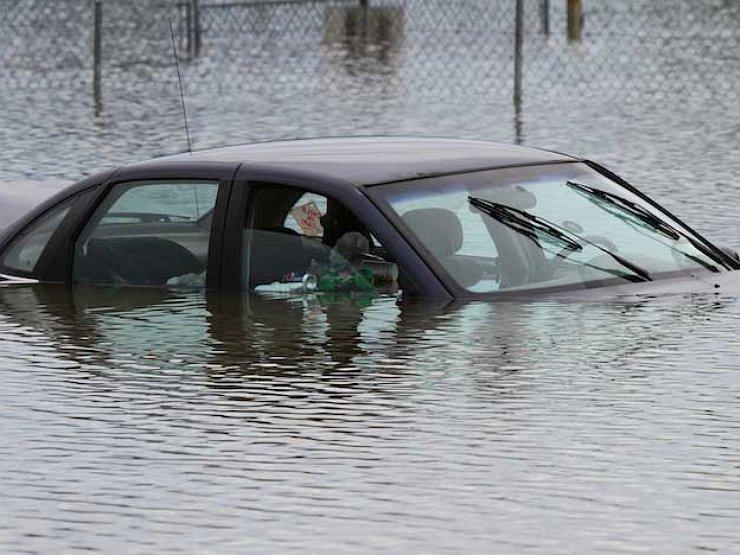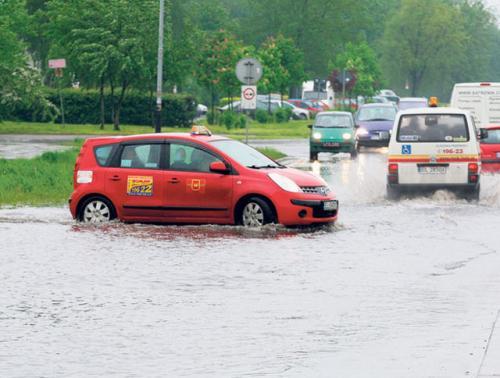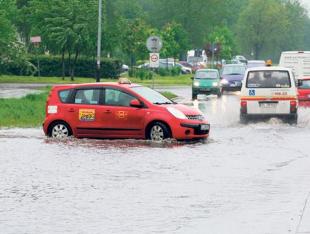
Water is dangerous for the car
 Driving a car through a deep puddle requires proper technique so as not to damage the car.
Driving a car through a deep puddle requires proper technique so as not to damage the car.
Driving a car through a deep puddle requires proper technique so as not to damage the car. Driving through puddles is often associated with rapid cooling of the engine and suspension elements and flooding of the car's electrics.
In the case of an engine, the most dangerous thing is water getting inside it through the suction system. Water sucked into the cylinders reduces power, causes damage, and can reduce lubrication efficiency if it enters the oil pan. If you "suffocate" the engine with water, it may stall.
Driving through a deep puddle can also flood and damage the alternator, which can lead not only to a short circuit, but also to seized bearings and, in extreme cases, cracking of the housing. Ignition elements and electronics are in a similar situation, where a short circuit is most dangerous, and moisture that remains in the closed cases of such systems for a long time leads to their tarnishing and corrosion.
 One of the most expensive surprises that can await us after leaving the puddle is the complete destruction of the catalyst, which heats up to several hundred degrees and, after a quick cooling, can crack and completely stop working. Old models are especially susceptible to this, which are not equipped with a special heat shield or it is destroyed.
One of the most expensive surprises that can await us after leaving the puddle is the complete destruction of the catalyst, which heats up to several hundred degrees and, after a quick cooling, can crack and completely stop working. Old models are especially susceptible to this, which are not equipped with a special heat shield or it is destroyed.
Also, do not forget about the lowest elements, such as brake discs and pads. Here, too, as a result of rapid cooling, microcracks can appear on the brake disc and the destruction of the brake linings or brake pads. It should also be remembered that wet parts of the brake system will be less effective for some time (until they dry).
The only advice when driving a deep puddle is caution, patience and a very smooth ride. First of all, before the trip, check the depth of the puddle with a stick. And here's an important note. If we decide to test the depth by entering a puddle, we should always "explore" the road in front of us. Manholes are completely invisible, from which water flooding the road often flowed. It is safest to drive into puddles, the depth of which will not cause the car to sink above the threshold line, because then the water will not penetrate through the door inside. 
Before overcoming a water barrier, it does not hurt to turn off the engine and “cool down” the car. Sometimes such cooling takes even several minutes, but thanks to this we will avoid sudden temperature changes on the elements of the brake and exhaust systems.
When it comes to steering technique, above all, keep your speed very low. Water splashes from under the wheels can enter the air filter and higher parts of the engine.
If we are driving across a stream and the bottom of the puddle is covered with slippery mud or silt, we can expect the car to be removed and the driver to constantly monitor and adjust the track.